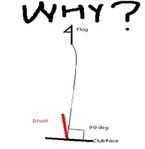Damon Lucas
Super Moderator
Brian,
Could you post a modern set of ball flight laws, with some numbers to enhance our understanding of them?
Could you also describe the many factors affecting ball flight, with their relative importance emphasised?
Regards,
Could you post a modern set of ball flight laws, with some numbers to enhance our understanding of them?
Could you also describe the many factors affecting ball flight, with their relative importance emphasised?
Regards,




